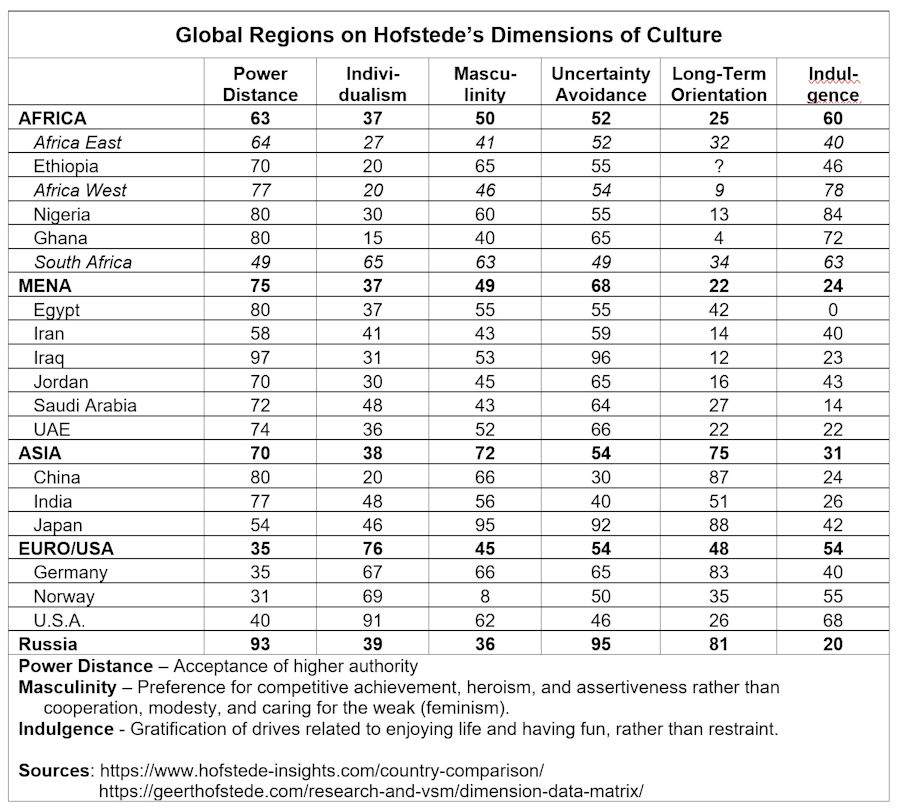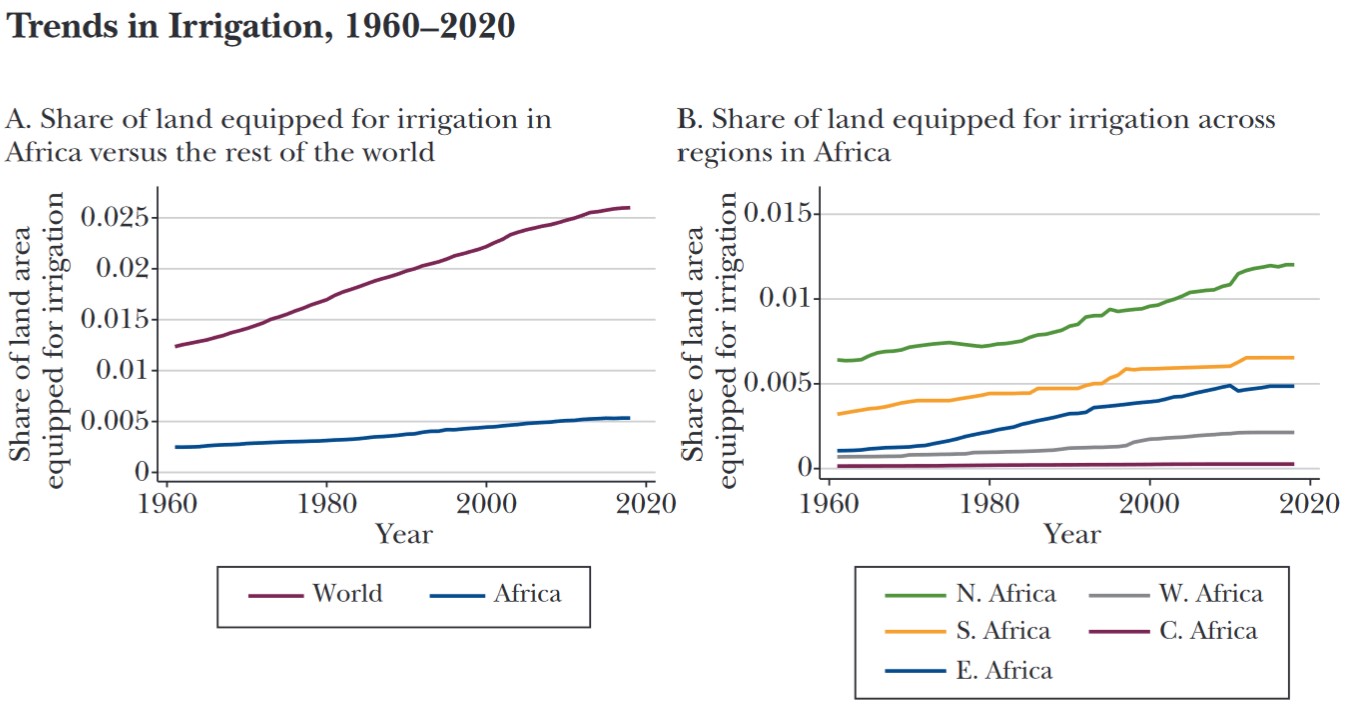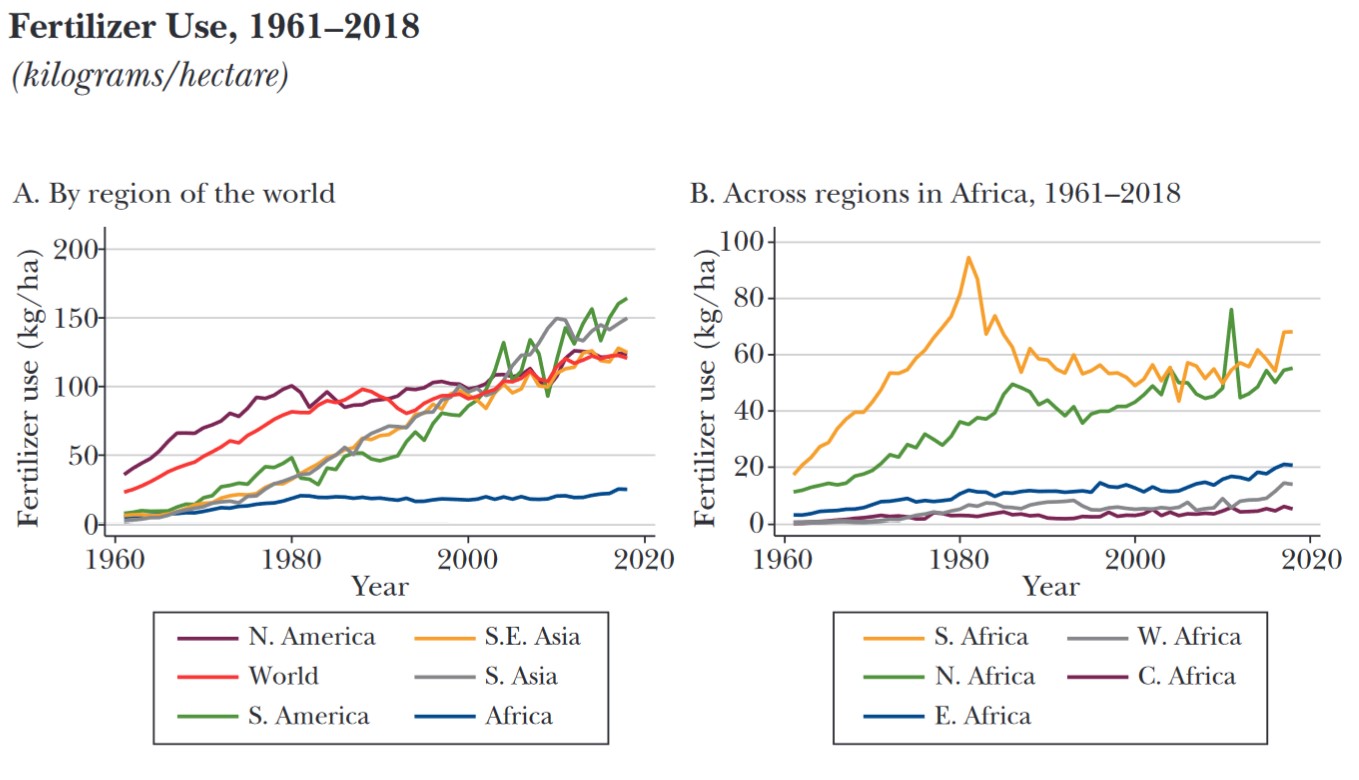|
Africa and the Middle East
Sub-Saharan Africa Map:
Sub-National Human Development Map: Electricity in Sub-Saharan Africa Map: Language Groups in
Africa Country List (48) and Charts: Sub-Saharan Africa
A. West Africa - largest region in Sub-Saharan, including Nigeria and 16 other countries. B. Central Africa - dominated by D. R. Congo (former Zaire), has the lowest average income, but Gabon and Equatorial Guinea are relatively wealthy exceptions. C. Southern Africa - with mineral wealth and unique polity, this is the wealthiest region of Sub-Saharan Africa, led by Botswana, Republic of South Africa, and Namibia.
D.
East Africa - many troubled countries, some showing new
signs of stability and growth. Kenya, for example, was a
leader in adoption of cell phone technology in Africa
History
A.
Early History
1.
Rise of the Humans: The first hominids
(great apes) that used tools appeared in Southern, Eastern,
and Central Africa about 4 million years ago, and the first
Homo sapiens appeared in the fossil record in about
350,000 years ago. Evidence of long-distance trade begins
about 320,000 years ago. 2.
Desertification: The Sahara region alternates
between desert and savanna grassland in a long cycle caused
by changes in the Earth's axis as it rotates around the sun,
moving the locations of monsoons. In around 5000 BC, the
Sahara entered a dry phase (that should reverse itself about
15,000 years from now), forcing much of the population to
move north to the Nile valley and others to move south. 3. Egyptians of the Old Kingdom: 2700-2200 BC, the "Age of the Pyramids," hieroglyphic writing, broad education, developed mathematics, plotted movement of stars and planets, prepared 365-day calendar.
4.
Kingdom of Kush - In part of what is now Sudan, there
were wealthy merchants of ebony, ivory, perfume, and gold.
During the 8th century B.C., conquered Egypt and controlled
N.E. Africa. Discovered how to make iron; developed a major
industry and spread technology to other regions of Africa. 5. Aksum - In the region that is now Ethiopia and Eritrea, a wealthy kingdom arose in the 5th century BC, based on trade links between the Red Sea and the Mediterranean, accessing Egypt, Israel, Greece, and Rome, and reaching to India and China. Aksum exported ivory, hippopotamus hides, gold dust, spices, and live elephants, and it manufactured glass crystal, brass, and copper for export. A Christian church was recently discovered in Aksum that was built in the fourth century A.D., about the same time when Roman Emperor Constantine I legalized Christianty and then converted on his deathbed. 3. Kingdom of Ghana- First major power of West Africa, based in modern Mauritania and Mali during 5th - 8th C., A.D. Most people were farmers, but wealth derived from gold mining and iron production. Iron production supported military power, tribute from neighbors. 4. Mali Empire - Replaced Ghana during 13th C; gaining control of the gold-salt trade. Led confederation of 3 states and 12 provinces.
5.
Songhai Kingdom
- Based on Niger River, gained control of gold-salt trade from
Malis in late 1300s. By end of 15th C., built
largest empire known in W. Africa. Established efficient
provincial government and enforced system of weights and
measures. Timbuktu became center of Islamic learning. B. Trans-Atlantic Slave Trade 1. Slavery (usually of conquered people/tribes) was practiced within several regions of Africa before the Europeans arrived, and was conducted with Europe and the Middle East for many years, but grew enormously after Americas were discovered in 1492, revealing a huge labor shortage in the Western Hemisphere. Native populations were decimated, creating labor shortages. Slaves first exported from Africa to the West Indies in 1510. Continued more than three centuries. 2. Africa lost 23 million to the slave trade, including many of the healthiest, strongest, and most skilled workers and craftsmen. 3. The trade was abolished in England, the U.S., Holland, and France during the early 1800s. Sierra Leone and Liberia provided settlements for returning slaves.
UPDATE: Nunn (2012)
argues that the slave trade caused long-term and continuing
harm to economic development, because it damaged trust
within and between tribal groups, reducing cooperation and the
effectiveness of local governments. C. The Colonial Period 1. Short period of "legitimate" commerce between Africa and Europe during mid-1800s. 2. During 1870s-1890s, during the "Scramble for Africa," all African territories except Ethiopia and Liberia were divided into 23 colonial possessions, held by 7 European countries. Africans adopted official languages and legal systems of the colonizers. 3. Results of colonialism: a. Focus on low-cost extraction of primary products. Each colony became dependent on exports of a small number of commodities. b. Transport routes were built for a single purpose—to move the products of mines and plantations to their external destinations. c. Dual pattern of export enclaves in the center, migrant labor in periphery. d. Political boundaries ignored African ethnicities; interrupted indigenous nation-building. e. Little attention devoted to education of Africans. f. Little infrastructure built in rural areas where most of the population lived.
D.
Independence, State Ownership, and Import
Substitution
E.
Socialism, Capitalism, and Authoritarianism Cultural Norms 
Education
Linguistic
Divisions Agriculture
 Sources: This and the following charts/tables on agriculture are taken from Tavneet Suri and Christopher Udry, "Agricultural Technology in Africa," Journal of Economic Perspectives, Volume 36, Number 1, Winter 2022, Pages 33–56. https://pubs.aeaweb.org/doi/pdfplus/10.1257/jep.36.1.33    A. Historical Farming Practices
1.
Shifting
cultivation - nomadic lifestyles
2.
Settled
cultivation - made possible by crop rotation techniques
3.
Colonial
cash-crop production B. Land Tenure Systems 1. Tribal communalism - insecure property rights with no legal title or protection. Continues to be a major system of tenure in many countries. 2. European private ownership
3.
Gradual
transition to African private ownership
and to titling and protection of communal lands (see
this chart) From World Bank 2014 report: At the end of apartheid in 1994, 86 percent of all farmland was held by the white minority (10.9 percent of the population). Although a land reform program was launched in 1994 to reduce land ownership inequality by transferring land from white South Africans to the majority and poor black population, as of March 2013, nearly 80 percent of the land was still owned by white minorities. In Kenya, three powerful political families were estimated to own more than 1 million acres of rural land, while at least 4 million rural Kenyan citizens were landless and at least 11 million owned less than 1 hectare.
Governance
Infrastructure
Health
and Development Resource
Curse
Middle East and North Africa
Historical Background: 570 C.E. -
The Prophet Muhammad was born in Mecca in what is now Saudi
Arabia. 610 C.E. - According to Muslim belief, Muhammad received his first revelation, recorded in the the Quran, from the angel Gabriel, giving birth to the Muslim faith. 622 C.E. - In Medina, Muhammad established an Islamic state and started expanding it. 633 C.E.
- Muhammad died, but his father-in-law, elected
caliph, continued territorial expansion. By 750 C.E., the
caliphate expanded to include virtually all of today's MENA
region (see
map). 1099 C.E. - European Crusaders captured Jerusalem, but Muslims regained control of the Holy Land under Saladin, the Sultan of Egypt and Syria, in 1187 C.E. 1299 C.E. - The center of Islamic military power started shifting to Turkey with establishment of the earliest Ottoman state in Anatolia. 1453 C.E. - Ottomans conquered the Byzantine capital, Constantinople, and changed its name to Istanbul. 1699 C.E. - The Ottoman empire reached the peak of its territorial expansion, covering most of today's MENA, but not Persia/Iran (see map). 1914 - The
Ottoman empire is defeated during WWI and European colonial
powers start carving the MENA region (see
map). Timur Kuran's analysis: "Why the Middle East is Relatively Poor: Historical Role of Islamic Law" Under Islamic law, businesses were based on partnerships, which had no continuity, unlike European corporations. So businesses had limited lives and didn't grow. Social services were/are provided by waqfs (trusts) with inflexible missions, set by their founders, perhaps centuries ago. Islamic laws of inheritance required divisions of property, which probably was beneficial for social equality, but limited accumulations of wealth, compared to primogeniture in Europe, so Islamic businesses remained small. Islamic lending practices, with relatively strict limits on payment of interest, hindered the development of financial institutions. Sources of conflict in the region: The
resource curse. Poor development of democratic
institutions in oil-rich countries and the activity of
foreign forces. Conflict
with Israel over failure to move forward on a two-state
solution for the Palestinians (complicated by divisions in
the Palestinian leadership). Competition
between Saudi Arabia and Iran for leadership of the region,
magnified by sectarian divisions between Sunni and Shia and
by the presence of external forces (Russian, American, and
others).
Instability of economies that are dependent on international oil prices - see chart
The Arab League attempted to start a common market, but with little success. Serves more as a forum for security issues and to protest Israeli treatment of Palestinians. In April 2018, when Turkey invaded northern Syria, the Arab League passed a resolution calling on Turkish forces to withdraw. OPEC is known, of course, for its attempts (sometimes successful in the past) to control global oil markets, but they have lost much of that control. Although it includes only 6 of the 21 countries in the region, the Gulf Cooperation Council is probably the most important multilateral organization in the region. It has many of the same long-range objectives as the EU - a unified market, a customs union, a single currency, etc. 2014
- Cooperation was damaged in 2014 when Qatar was accused by
the U.S. and other members of the GCC of allowing financial
supporters of the Muslim Brotherhood, Hamas, and other
Islamist groups to live in its borders. 2017
- Saudi Arabia (emboldened by its strong relationship with
the Trump administration), Egypt, the UAE and Bahrain (but
not Kuwait or Oman) claimed that Qatar was supporting
terrorist groups, and cut diplomatic ties, closing borders
and airspace, and imposing an economic blockade. 2017
(December) - Trump administration recognized Jerusalem as
the capital of Israel, farther obstructing progress toward a
two-state solution. 2018
- Brutal murder of journalist
Jamal Khashoggi by agents of the Saudi
government, evidently working for crown
prince Mohammed bin Salman (MBS), at the
Saudi consulate in Istanbul, Turkey. 2020
(September) - Abraham Accords signed in Washington, DC,
normalizing relations between Israel, the UAE, and Bahrain.
Morocco joined the accords in December 2020 when the Trump
administration recognized its control over the disputed
Western Sahara region, and Sudan joined in January 2021 when
the Trump administration removed it from the list of "state
sponsors of terrorism"and extended a $1.2 billion loan. 2021
(January, just as Trump was leaving office) relations
between GCC countries were restored - travel and trade
resumed.
|

